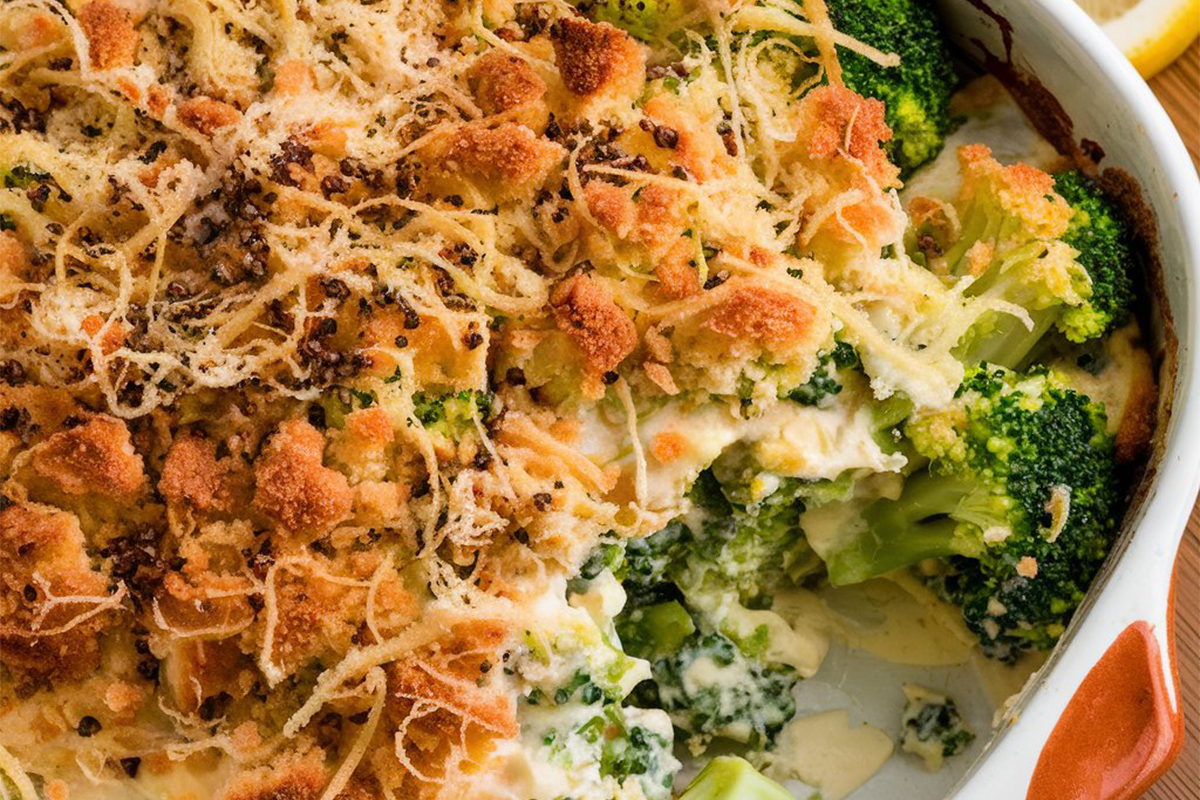A well-made broccoli casserole has a creamy, satisfying texture. However, achieving that perfect consistency can be tricky. Sometimes, casseroles turn out too watery, which can detract from the dish’s flavor and appeal. If you’re wondering how to thicken a broccoli casserole, there are several techniques and ingredients that can help you get it right every time.
Why Consistency Matters in Broccoli Casserole
One of the main reasons you want to ensure your broccoli casserole is thick enough is to avoid a runny texture that can make the dish unappetizing. The ideal broccoli casserole holds its shape and offers a balanced bite of creaminess and texture in every forkful.
One way to maintain the right consistency is by using the correct amount of cheese. To make sure your casserole is rich and flavorful, it’s important to choose the right cheese. For more insight into using cheese in casseroles, check out the chicken broccoli rice casserole recipe.
Common Issues with Casserole Consistency
Many times, broccoli casseroles turn out too watery because of improper handling of the ingredients. If you use frozen broccoli without thawing and draining it properly, it can release excess moisture. Similarly, adding too much liquid or cream can result in a runny casserole.
To avoid these issues, focus on the right balance of thickening agents. For more inspiration on how ingredients impact your meal, take a look at how chicken, rice, and broccoli make a great meal here.
Top Methods to Thicken Broccoli Casserole
1. Using Flour or Cornstarch
- A quick way to thicken casseroles is by adding a flour or cornstarch slurry. Simply mix equal parts flour or cornstarch with water or broth and stir it into the casserole mixture before baking. This method works well without changing the flavor of the dish.
2. Making a Roux
- A roux is a mixture of butter and flour cooked together, which helps to thicken the casserole’s base. You can then mix the roux with milk or broth before adding it to the casserole. This ensures a creamy and thick base for your dish.
3. Adding More Cheese
- Cheese is a natural thickener. Incorporating more cheddar, parmesan, or cream cheese will not only enhance the flavor but also help thicken the casserole. Creamy cheeses like cream cheese can add a velvety consistency to the casserole.
Preventing a Watery Casserole
Here are a few tips to prevent your casserole from becoming too watery:
- Drain Frozen Broccoli Properly: If you’re using frozen broccoli, be sure to thaw and drain it well to avoid adding excess water to the dish.
- Pre-Cooking Broccoli: Lightly sauté or roast the broccoli before adding it to the casserole to reduce its moisture content.
- Avoid Over-Steaming: When using fresh broccoli, avoid over-steaming, as it can release too much water into the casserole.
If you’re interested in other tips for creating savory meals, see how the bottom crust of a chicken pot pie can be prevented from becoming soggy—a common issue in many baked dishes.
Gluten-Free and Low-Carb Thickening Alternatives
For those who need to follow a gluten-free or low-carb diet, here are a few ways to thicken your broccoli casserole without flour:
1. Almond Flour or Coconut Flour
- These flours are great gluten-free alternatives to regular flour. They can help thicken the casserole while adding a subtle nutty flavor.
2. Cauliflower Rice
- Swap out traditional rice for cauliflower rice. Not only does this reduce the carb count, but it also adds bulk and texture to the casserole.
3. Xanthan Gum
- A small amount of xanthan gum can be used to thicken gluten-free casseroles. It’s highly effective and works without altering the flavor.
FAQs: Frequently Asked Questions
How do I thicken a broccoli casserole without flour?
You can use cornstarch, cheese, or even eggs as alternatives to flour. These ingredients act as natural thickeners and bind the casserole together.
Can almond flour thicken casseroles?
Yes, almond flour can be a great gluten-free option for thickening casseroles without adding gluten. It’s an excellent substitute for regular flour.
What’s the best cheese for thickening a broccoli casserole?
Cheddar, parmesan, and cream cheese are the best options for adding both flavor and thickness to your casserole.
How can I thicken a casserole that’s already baked?
If your casserole is still too runny after baking, you can add a topping of crushed crackers or breadcrumbs and bake it for an additional 10 minutes. This will absorb some of the moisture while giving it a nice crispy topping.
Conclusion
Achieving the perfect thickness in your broccoli casserole can make a big difference in its texture and overall appeal. By using methods such as incorporating a roux, adding extra cheese, or using gluten-free thickening alternatives, you can ensure your casserole is never too runny. Properly draining ingredients and pre-cooking broccoli also help prevent excess moisture, resulting in a creamy and delicious casserole.
For more recipe inspiration, you can explore similar comforting dishes like the pumpkin banana loaf that offer a delightful balance of flavors and textures.
